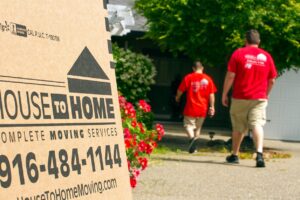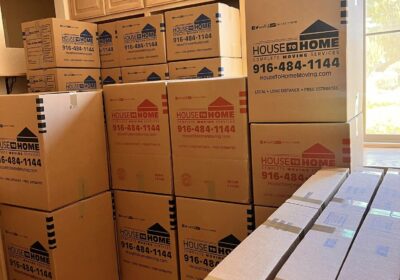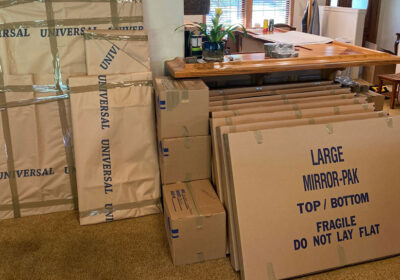 Use quality materials. Professional supplies will provide better protection for your items, but they don’t have to cost a lot of money.
Use quality materials. Professional supplies will provide better protection for your items, but they don’t have to cost a lot of money.- Prepare boxes. Reinforce the bottom of every box with tape, then line with crushed packing paper for extra cushion.
- Use plastic wrap and trash bags to prevent spills. If you’ll be putting bottles of liquids like cleaning supplies or bath products in a box, line it with a trash bag. Then use a piece of plastic wrap under the cap to seal each bottle before you pack it.
- Learn how to use supplies. Read these posts about packing paper, plastic wrap and paper padding, so you’re prepared to use them.
- Create a packing basket. Put tape, box labels, markers, scissors, and other supplies in a basket so you can easily carry them from room to room. Make a few if multiple people are working at the same time!
- Designate an area for packed items. Clear out space in a non-essential room so you can stack full boxes in there. This will let you get started early without creating a lot of clutter around the house.
- Know what you can’t move. Many companies aren’t able to transport certain items. Get rid of (or make another plan for) items on the Do Not Ship list.
- Decide what to move. Go through your belongings and get rid of anything you won’t need or want in the new home.
- Keep valuables separate. Consider taking important documents, expensive electronics and other valuable items with you instead of putting them in the moving equipment.
- Make an “open first” box. Put together one or two boxes of things you’ll need during your first night/day in the new house. Include basic toiletries, towels, a few kitchen items, blankets, etc.
- Check outdoor items for insects. Some areas of the U.S. and Canada have invasive pest restrictions and require you to inspect outdoor items before moving them.
- Put heavy items in small boxes. Overweight boxes can be difficult to move. Using a smaller box will keep you from putting too many heavy pieces inside.
- Use all available space. Take advantage of drawers by filling them with unbreakable items (towels, sheets, etc.), and pack boxes completely, so you aren’t moving empty space.
- Keep similar items together. Take the extra time to sort things by where they’ll be stored in the new home. Doing this now will help you stay organized later!
- Label everything. Label each box with its corresponding room so move-in day goes smoother. Mark it on multiple sides so it can be seen no matter how it’s picked up during the unloading process.
- Consider using a number system. Number each box and make an inventory of what’s inside so you can easily find things when you need them.
- Take pictures. Before unhooking cords or taking furniture apart, take a picture of how it’s set up. This way you’ll be able to put everything back together faster.
- Put hardware in bags. If you remove any screws or other small pieces, put them in a plastic bag, so they don’t get lost. It’s also a good idea to tape the bag to the item to keep it all together.
- Put string under tape when sealing boxes. Cut a piece of wool string that’s a little longer than the box opening, place it on the seam, and tape over it. You’ll be able to pull the string to remove the tape instead of having to cut it open!
- Hire professionals for specialty items. Things like pianos, safes and valuable art require special handling and care. Consider hiring professionals who have experience working with these items.
[siteorigin_widget class=”WP_Widget_Recent_Posts”][/siteorigin_widget]
[siteorigin_widget class=”WP_Widget_Search”][/siteorigin_widget]
[siteorigin_widget class=”WP_Widget_Archives”][/siteorigin_widget]
[siteorigin_widget class=”WP_Widget_Categories”][/siteorigin_widget]



